The First Step is Admitting You Have a Problem
I admit it. This weekend I attended the 2008 BrickCon conference targeted at Adult Lego Hobbyists (ALHs). The conference lasted for essentially three full days from Friday to Sunday. I even took off work on Friday. Super nerdy? Yes. But before you judge… hear my story.
I always loved Lego as a kid. What’s not to love. And when my kids started getting to Lego age I eagerly bought sets for them to play with. And they do. But, so do I. It’s fun. And the Lego of today has evolved far beyond what they had when I was a kid. It’s not just the types of different pieces they have. It’s the techniques that have evolved that let you create incredible things with Lego these days that you could never have done 20 and 30 years ago.
When I was a kid, I always wanted to be an architect. Designing structures was super interesting and exciting. The math seemed less fun. So I went into computers instead. ;) But that notion of creating a structure and ultimately creating a detailed world has never left. And there simply aren’t many mediums available for creating your own world that are as accessible as Lego. Anyone can do it.
I knew that BrickCon had a public exhibition on Saturday and Sunday where thousands of people come to see all the models laid out. I didn’t know that all the other hours were filled with the local (and not-so-local) Lego community exchanging ideas, socializing, sharing techniques, and generally geeking out about Lego. I went to the conference not knowing exactly what to expect (I haven’t attended any “cons” before). What I found was a great example of a community that is thriving online as well as in the real world. I was in Lego geek heaven. And luckily, they were all very nice and welcoming.
I realized later just how accepting they were of me given that just about everyone there brought a model to display. I hadn’t even done that. Mostly because everything I’ve built on my own so far looks like ass. They were kind enough to teach me some key things that the average Lego observer might not know about. A sampling of observations from the con in no particular order:
- “SNOT” stands for “studs not on top”. This is a technique (made possible in 1998 by the advent of some key new Lego pieces), where you are literally able to have some elements of your model where the studs on the Lego brick are facing sideways or even down. This is done by attaching the bricks to key pieces that are essentially able to “turn corners”.
- I listened to many people talk about coming out of their “dark ages”. The dark ages are the period after you stopped playing with Lego as a kid, and while you fondly remember Lego, and sometimes even would like to play with it, you don’t because after all, Lego is for kids. When you come out of your dark ages, you stop caring that Lego is for kids and just dive in.
- Building many of the models we saw takes some serious cash. Some of these models took tens of thousands of bricks to create (or more). And depending on the colors you pick they can be hard to find. Many of the people I met buy packaged Lego sets primarily for the pieces in them to be used for their own models. One person I know bought the VW Beetle model strictly because of how many dark blue pieces it had. He loves dark blue and dark blue is very hard to find (unlike the royal blue that is a long-time Lego staple).
- The ratio of men to women was 20:1 or worse. Ladies, if you want guys (on the nerdy side) with a steady job (they must have one to pay for all that Lego), and lots of attention to detail, this is the place to find them.
I met several cool people. Ben (who I’d known before) spent four years making an very impressive and large space ship. He was nice enough to introduce me around. Dan (who I didn’t meet) made an incredible shopping mall for the “city overrun by zombies” display. I will have to meet him some other time. His shopping mall included pools of blood under humans who had been killed by zombies as well as a tiny Lego store complete with Lego pieces in clear bins behind the cash register — just like the real store. Paul recreated the now gone Vancouver Union Station. He lit the interior with Ikea lighting and it’s beautiful to behold if you like turn of the century architecture. Wayne did an amazing job creating the outside of Smith Tower in Seattle’s Pioneer Square. He even included the HVAC machinery on the roof. Will has left his day job to embrace his organically grown small business designing custom weapons for Lego figures (minifigs). I am not kidding you. He designs the weapons using a CAD tool. He does his own tooling (sometimes), and then he even does his own custom plastic mold injection in his garage. His creations look like they were designed in Denmark by the Lego folks themselves. His margins aren’t great (how much can you charge for a tiny M-16 for your minifig?) but his commitment to quality is unsurpassed. I hope he finds a way to make tons of money on it. Jon made an entire spaceship with nary a Lego stud exposed. The whole thing is covered in tiles making it incredibly smooth and as he puts it, with more of the type of detail you’d find in a non-Lego model. Very slick.
And finally, Jeff made some really incredible buildings. From his super detailed simple homes (modeled after his own), to his REI like store downtown replete with sideways canoe mounted on the building (check out that SNOT technique) to its own rock climbing wall. But his most impressive accomplishment was the absolutely enormous space ship he built which included over 100 rooms on four levels. Each room was furnished from the crew quarters to the kitchen, to the bridge, etc. And each room had its own sliding door that recessed into the wall. You can almost hear that Star Trek whoosh. Oh yeah… it had it’s own fighter bay too and when the doors opened it made an awesome fighter bay door opening sound.
Overall I was blown away on two fronts:
- I realize for someone creating software on the web these days that its kind of lame for me to just now be diving into one of the communities online to this degree. I’ve been a member of many communities only online, but somehow having the real-world reinforcement brings the whole experience into focus. I think understanding more about how these communities really function will hopefully help our software get better. The two primary tools for the Lego community — BrickShelf, for posting your creations (MOCs) and BrickLink, for purchasing that hard to find part — are hugely popular. However, (with respect) the experience using them could be so much better. The community thrives though, and of course it’s the community that makes these tools as useful as they are. The experience really is secondary.
- I guess I too, recently came out of my “dark ages”. (Am I coming out?) And while the words make sense, I didn’t really internalize just how much it’s the accessibility of Lego that enables people to create these worlds. Watching thousands of people come to visit the models and ooh and aah over them made it clear just how much people loved to be transported by the models.
Here at Jackson Fish Market, we’re really about creating experiences. It’s said that on our site since day one. An experience is really about transporting the user somewhere. Enveloping them in the world you’ve created. (In fact, if you’ll scroll to the top of this page for a moment you’ll see that with our street scene we’ve tried to create a little Jackson Fish Market world of our own.) More and more as we create new software experiences, our success will be determined by our ability to a) create experiences, and b) have a community that embraces and depends on that experience. Hanging out with my fellow Lego geeks this weekend has been super educational on both of these fronts.
I saw lots of people I knew standing in line to attend the public exhibition portion of the conference. When I told them I had registered for the private portion, and was able to see all the models without the crowds (not to mention spend all this time hanging out with Lego folk) they all had the same reaction. They teased me for being such a geek, and then admitted they were very jealous.
I’m not the first person to say this, but as a company, Lego has made the transition into the modern connected, user-generated world brilliantly. Those mold-injected plastic machines might as well be printing cash instead of little multi-colored plastic bricks.
Next year I won’t be a lurker and actually bring something I’ve built to exhibit at the show. I may not come close to some of the things built by the folks I mentioned above, but I’ll be sure to try.



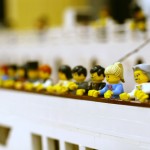
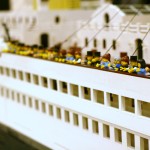
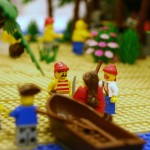
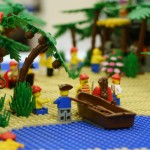
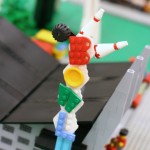
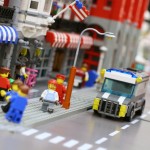
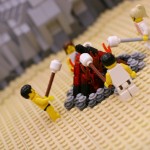
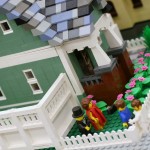
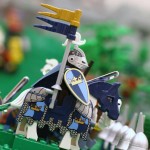
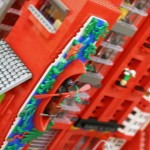

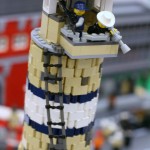
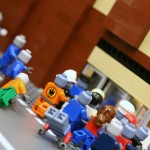
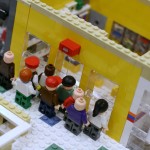
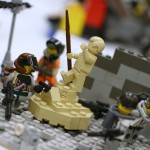
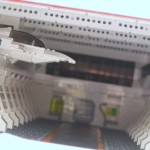

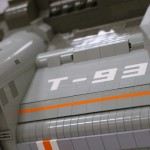
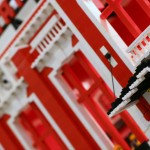
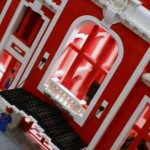
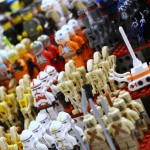
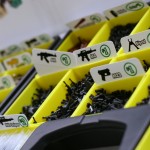
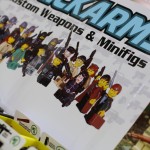


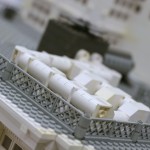
Join the discussion 1 Comment
teikjoon
October 8, 2008 at 12:50 am
I’m surprised you didn’t mention Flickr…being able to leave comments and feedback on other people’s MOCs is a lot more conducive to building rapport :)